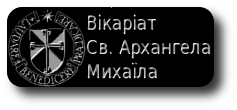
A Towering Meeting: Pope To Receive Bush in Vatican Gardens
18-06-2008
ROME, JUNE 11, 2008 - Like the spring rainstorms that have been sporadically sweeping Rome the past month, a train of high-profile visitors has been making every day an adventure in the Eternal City.
Forty-three heads of state for the U.N.'s Food and Agriculture Organization summit, Tom Hanks and Ron Howard filming "Angels and Demons," and protests regarding the presence of the president of Iran have invaded piazzas, displaced traffic and given each day a little touch of Roman theater.
This week the catwalk of illustrious visitors reached its climax when U.S. President George Bush flew into town Wednesday. The visit is part of a five-country tour of Europe, almost like a farewell appearance after his eight years in office.
The president is in Rome to visit old friends such as the newly re-elected prime minister, Silvio Berlusconi, but he's also making time for a new friend, Benedict XVI. Counting President Bush's last trip to Rome in June 2007, this meeting will be the third encounter between the two men.
In response to President Bush's warm reception of the Pope at the White House last April, Benedict XVI made an interesting overture toward forging a more personal bond by selecting a significant venue for their meeting.
In Rome, place is everything. Palaces with myriads of rooms designed for every rung on the protocol ladder, and important historical narratives splashed across every wall bespeak of a city with a strong sense of hierarchy.
From the Renaissance era, Popes developed more informal settings for meetings, looking for places where they could converse in a more relaxed environment surrounded by the beauty of nature.
Benedict XVI chose to host the president not in his office at the end of endless corridors and dramatic spaces, but in the Tower of St. John in the Vatican Gardens, a site traditionally associated with the more intimate moments and friends of the papacy.
The Tower of St. John grows out of the ancient Leonine walls built by Pope Leo IV to protect the precious relics of St. Peter against Saracen attacks in 852. Pope Nicholas V expanded the walls adding towers, including the one known today as the Tower of St. John.
The name probably was given to the structure after Pope John XXIII restored the space, intending to use it a private place of retreat. Little bronze statues of St. John the Baptist and St. John the Evangelist flank the coat-of-arms of John XXIII above the simple and austere entrance arch.
The tower has since been used briefly by both Pope John Paul II in 1978, shortly after his election, and Cardinal Bertone when he was appointed secretary of state. It is best known as a guest residence for special friends of the Pope.
The tower is perched at the highest part of the gardens in one of the most tranquil spots of the Vatican City State. The replica of the grotto of Lourdes is just a few meters away, and it is surrounded by a stunning botanical garden.
The natural setting of the tower is one of the most touching messages of the site. Sheltered by the Leonine wall, dozens of species of plants from all over the world thrive side by side. Exotic and delicate Japanese trees contrast with florid American Magnolias, while a young olive tree sinks its roots into Vatican soil to commemorate the beginning of Vatican-Israeli relations in 1994.
After the meeting, the two men will leave the formal garden and walk toward the English garden where they will stop at the Shrine of the Madonna of the Guardia. This elegant brick aedicule rendered precious by mosaic inlay was a gift to Pope Benedict XV, from his native home of Genoa.
On Aug. 29, 1490, outside a tiny impoverished village near Genoa, the Blessed Virgin appeared before a local farmer named Benedetto (Benedict) Pareto, asking him to build a Church to her on the rough and mountainous site.
Benedict XVI recalled this apparition when he paid homage to Virgin at the start of his apostolic pilgrimage to Genoa last month. He observed that when the farmer worried about all his difficulties, Mary replied, "Trust in me! You will not lack the means. With my help everything will be easy. Only be firm in your will."
Benedict XVI told the faithful of Genoa: "Mary repeats this again to us today. An ancient prayer, very dear to popular tradition, has us address these words to her, that today we make our own: 'Remember, O, most gracious Virgin Mary, that never was it known that anyone who fled to thy protection, implored thy help or sought thy intercession was left unaided.'"
These words contain some sound advice for our troubled age.














